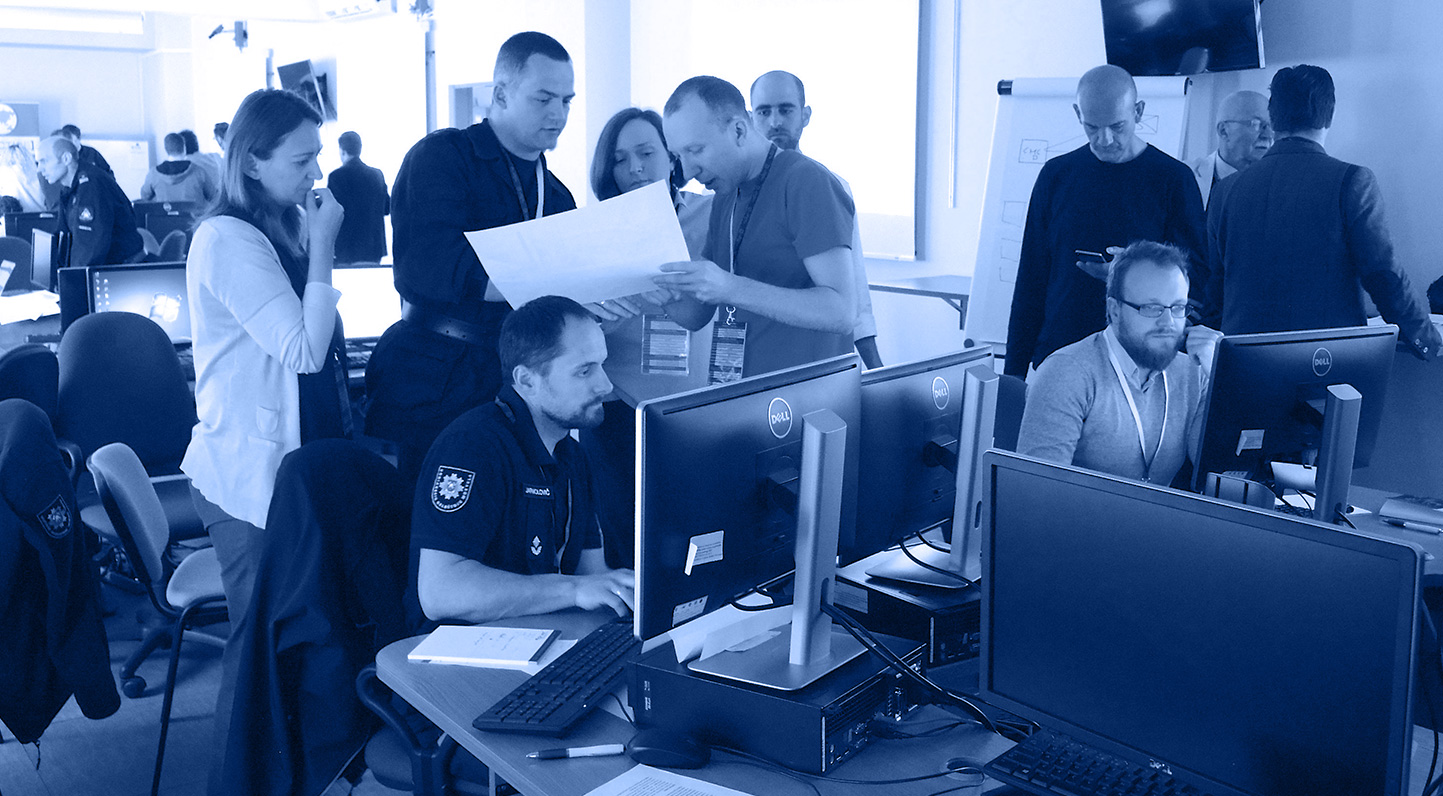between solutions and
to exchange data between
solutions and simulators
Solution providers
About
What this tool
is for
The Common Information Space (CIS) is used to facilitate data exchange between solutions (i.e. software tools) in a transparent and reliable way, in order to enhance the collaboration within and the effectiveness of crisis management while using these solutions. Currently used IT systems (i.e. legacy systems also present in the baseline) can also be connected to the CIS, such that these can feed data into solutions (e.g. a first dispatch report) or vice versa, and such that they can be fed with simulator input (e.g. simulated ambulance positions).
Connecting to the CIS is done by using current emergency management data exchange standards, like Common Alerting Protocol (CAP) messages, or Emergency Data Exchange Language (EDXL) messages. This facilitates exchange of understandable information between different organizations, even if they use different data formats (syntactical interoperability) and different languages and/or taxonomies (semantic interoperability). Main benefit is that the systems connected to the CIS do not have to adapt to the data formats of other systems, yet can still exchange information with them. If a solution or legacy system is not yet using such data exchange standards, their data inputs or outputs first need to be transformed into common standard formats.
To link up the solutions and legacy systems with simulators, the CIS can be connected to the Common Simulation Space (CSS) via so called CIS-CSS Gateways. Data from the simulators is translated into data that can be understood by the solutions connected to the CIS and requests from the solutions can be relayed back to the simulators. Because they translate specific message types, there may be multiple gateways. These gateways have to be developed trial specific, converting common standard data formats used in the CIS to common simulation data formats used in the CSS. The CIS and CIS-CSS Gateways do not need to have their own visual user-interfaces, since they only convert messages. Please find more information on the simulators and how they can feed the CIS in the detailed explanation of the CSS.

Configuration of the CIS and monitoring of its functioning is done via the admin tool, which does provide a visual user-interface to the trial staff. One major aspect of the developed CIS concept is data protection and security, which is considered necessary in order to create trust among the integrated organisations and their systems. This will be achieved by a trusted registration process for all organisations and an encapsulation of all messages exchanged via the CIS. The admin tool and the security is explained in more detail in their own section.
Technical details
The CIS consists of multiple Kafka topics, enabling data communication channels amongst the connected solutions and systems. Every data exchange type (and thus message type, for instance CAP or EDXL) should have its dedicated Kafka topic, such that data exchange between solutions, legacy systems and to/from simulators can be easily managed. Connecting solutions and systems to the CIS is done by using one of the offered adapters, which are available in the programming languages Java, C#, JavaScript/TypeScript/Node.js, Python and as REST end-point. These adapters and the technical tools to implement and test the trial-specific technical set-up are explained in the section about Developer Extras.

